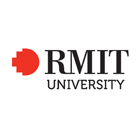Master of Landscape Architecture
Master of Landscape Architecture
The Master of Landscape Architecture is about envisioning, investigating, and proposing better ways of living in a complex and changing world. The Master of Landscape Architecture course is accredited by the Australian Institute of Landscape Architects. The course is recognised as a world-class facility in fostering design knowledge, critical thinking,…
Categories
COURSE DESCRIPTION
The Master of Landscape Architecture is about envisioning, investigating, and proposing better ways of living in a complex and changing world.
The Master of Landscape Architecture course is accredited by the Australian Institute of Landscape Architects. The course is recognised as a world-class facility in fostering design knowledge, critical thinking, and design advocacy through innovative teaching and research.
RMIT’s Master of Landscape Architecture will equip you to become a leader and innovator in landscape architectural practice.
Design Research is at its core
Design research projects undertaken within this course sit at a contemporary and international level. Design research enables you to engage profoundly with the discipline. You will investigate issues and topics that are relevant to contemporary issues in urban and natural contexts increasingly affected by climate change, natural disasters and misappropriation of land.
Study in RMIT’s unique design studios
You’ll learn through design studios, which operate as laboratories conducive to experimentation, investigation, and the exploration of design as an agent that responds to issues in the built environment. Studios are led by distinguished local and international academic practitioners drawing from a diverse field of knowledge and experience.
Career
This course will prepare you for the professional practice of landscape architecture, working independently or as part of a large team. From urban design projects to working with large open spaces, the parameters of projects are broad.
As a landscape architect, you will find career opportunities in the design offices of landscape architects, architects, planners, urban designers and engineers throughout Australia, and government organisations at federal, state and municipal levels.
Graduates may also become involved in smaller projects such as private gardens, historic estates and productive landscapes.
Professional recognition and accreditation
After completion of this two year program graduates meet the requirements to apply for membership and registration with the Australian Institute of Landscape Architects (AILA), the profession’s accrediting body.
Further Study:
Upon successful completion of this degree, you may be eligible for entry into an RMIT Masters by Research or Doctoral (PhD) program.
EDUCATIONAL INSTITUTION
Since its establishment in 1887, Royal Melbourne Institute of Technology University (RMIT) has been meeting the needs of the community surrounding it. Originally a Working Men’s College, RMIT showed its flexibility during World War Two, training over 20,000 servicemen in communications to help with the war effort.Now, it is a true pioneer in international education, championing cross-border study opportunities with campuses in various countries. Granted formal university status in 1992, RMIT is ranked 21st in the world for universities that are less than 50 years old.RMIT is the largest higher education institution in Australia, currently with more than 82,000 students. With nearly 20% of those students coming from overseas, it is a university that truly welcomes diversity and is a melting pot of different cultures. RMIT has three campuses in Vietnam, a European hub in Barcelona, an office in Indonesia, and partners with 200+ institutions in 42 countries to provide study opportunities worldwide.

